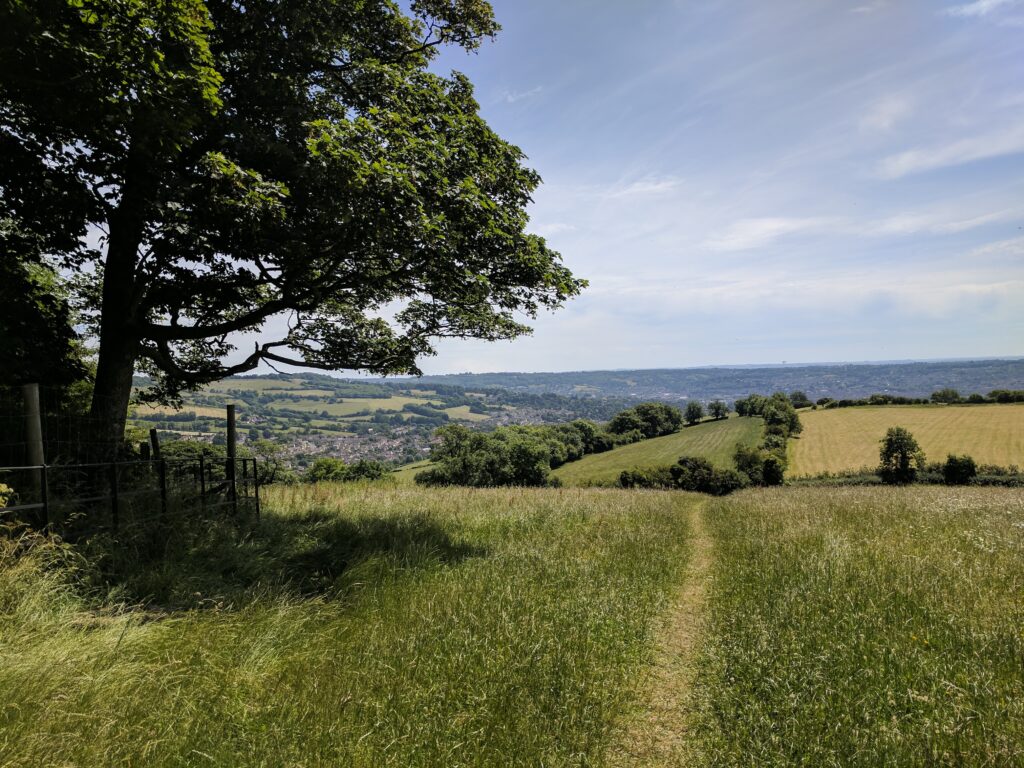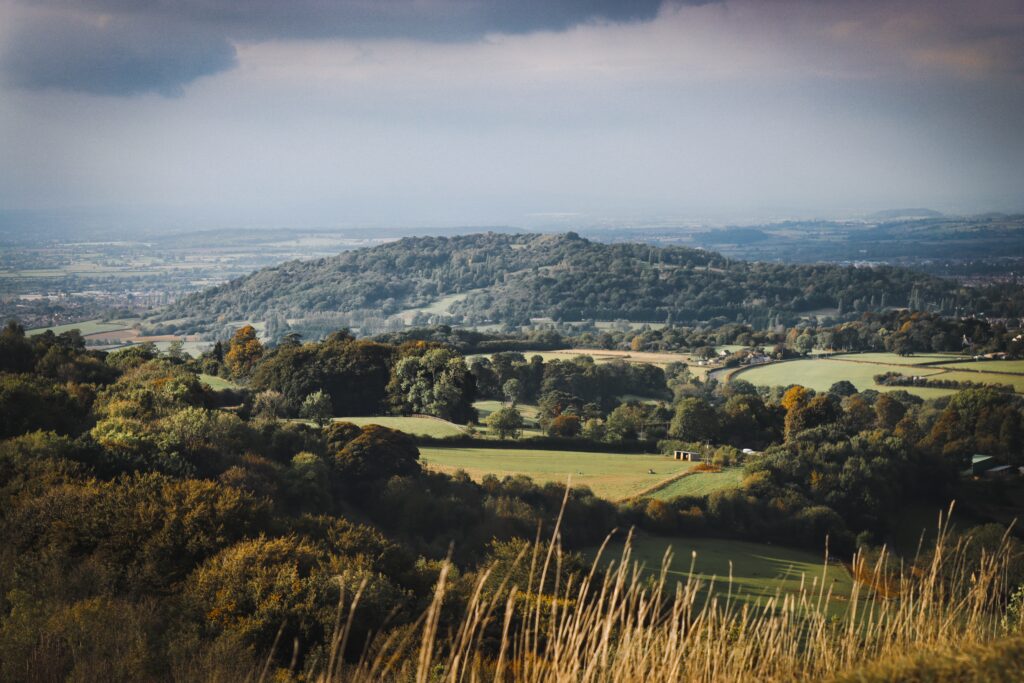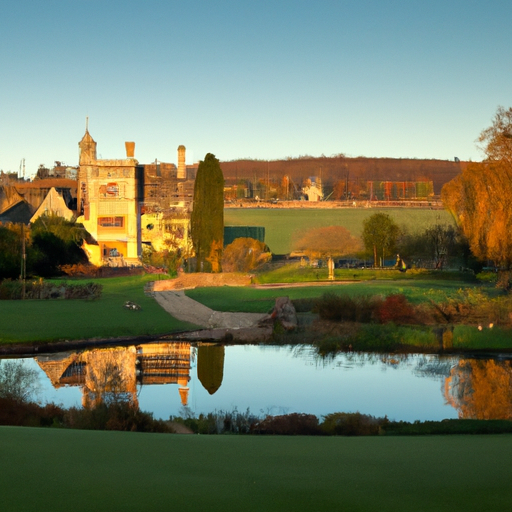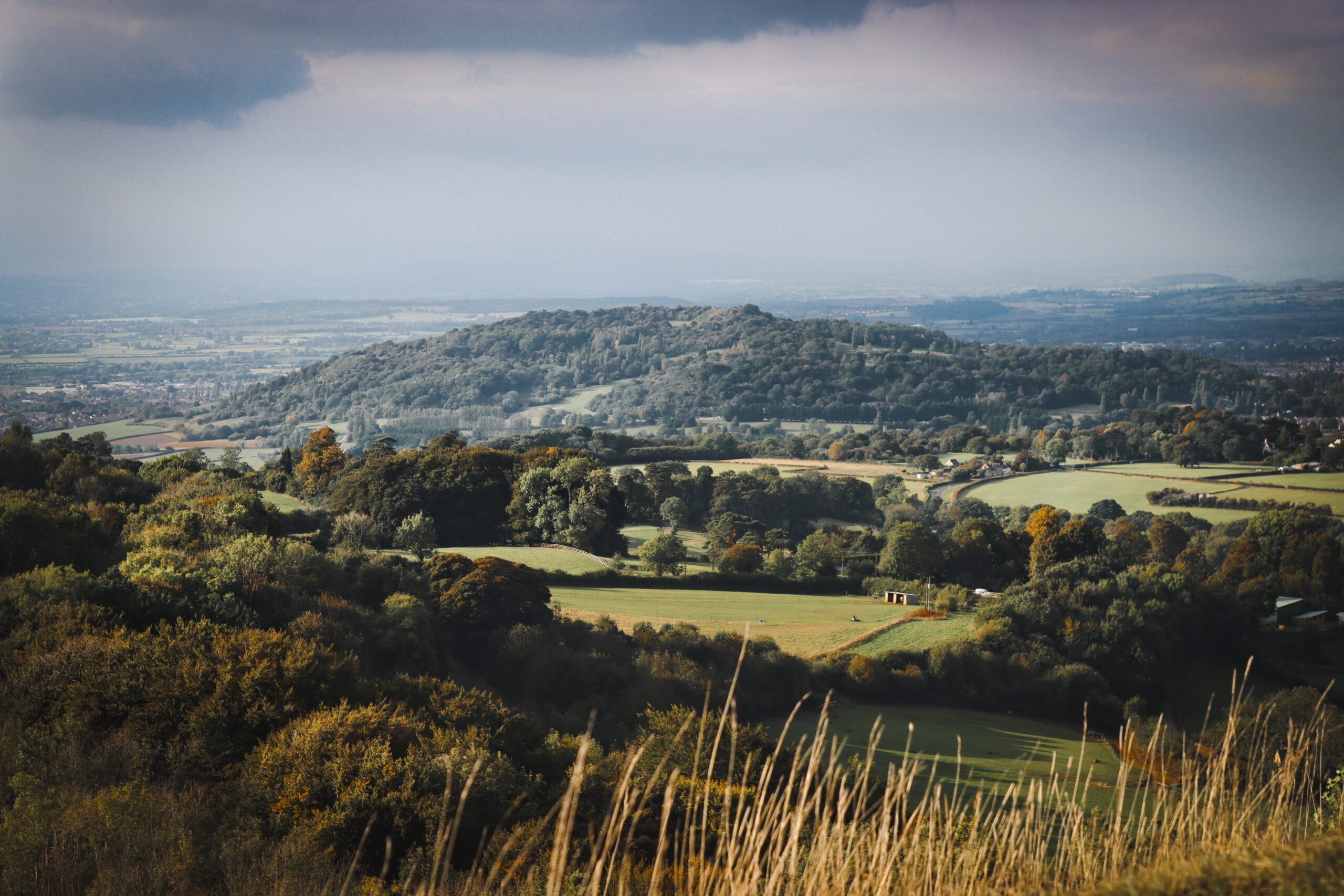If you find yourself wandering through the picturesque countryside of the Cotswolds, you may find yourself wondering if there are any magnificent stately homes to explore in this charming region. Luckily for you, the Cotswolds boasts a rich history and is home to numerous grand estates that are open to the public. From the opulent gardens of Blenheim Palace to the magnificent architecture of Chatsworth House, there is no shortage of stately homes to discover and immerse yourself in the elegance and grandeur of times gone by. So, come along and embark on a journey to uncover the hidden treasures of the Cotswolds’ stately homes.
History of Stately Homes in the Cotswolds
Medieval Origins
The history of stately homes in the Cotswolds can be traced back to medieval times. During this period, wealthy landowners began constructing grand buildings that showcased their status and wealth. These homes were often fortified and served as a symbol of power and prestige. Many of these medieval stately homes have been preserved and can still be visited today, offering a glimpse into the rich history of the region.
Renaissance Influence
With the arrival of the Renaissance period, stately homes in the Cotswolds saw a shift in architectural style. Influenced by the classical designs of Italy, these homes started incorporating elements such as columns, arches, and symmetrical proportions. This fusion of Renaissance and Tudor styles resulted in the creation of some truly magnificent structures that still stand as a testament to the creativity and craftsmanship of the era.
Georgian and Victorian Era
During the Georgian and Victorian era, stately homes in the Cotswolds underwent further transformations. The Georgian period brought with it a neoclassical style, characterized by elegance and symmetry. Grandiose mansions were constructed, featuring grand entrance halls, sweeping staircases, and lavishly decorated rooms. Victorian architecture, on the other hand, embraced a more eclectic approach, with Gothic revival and Queen Anne styles becoming popular. The result was a mix of architectural influences that added to the unique charm of Cotswold stately homes.
Modern-day Preservation
In modern times, the preservation of stately homes in the Cotswolds has become a priority. Many of these historic properties have been lovingly restored and are now open to the public, allowing visitors to immerse themselves in the architectural splendor and cultural heritage of the region. Efforts have been made to maintain the original features and integrity of these homes, ensuring that future generations can continue to appreciate their beauty.
Blenheim Palace
Overview
Blenheim Palace, located in Woodstock, Oxfordshire, is one of the most iconic stately homes in the Cotswolds. It was built in the 18th century and is the birthplace of Sir Winston Churchill. The palace is a UNESCO World Heritage site and attracts visitors from all over the world.
Architecture and Gardens
The architecture of Blenheim Palace is a stunning example of English Baroque style. Designed by Sir John Vanbrugh, the palace features a grand central dome, ornate stonework, and intricate detailing. The extensive gardens surrounding the palace, designed by Capability Brown, are a masterpiece of landscape design and include sprawling lawns, serene lakes, and beautiful flower beds.
Historical Significance
Blenheim Palace holds great historical significance, not only as the birthplace of Sir Winston Churchill but also as a symbol of victory. It was built to commemorate the triumph over the French in the War of the Spanish Succession. The palace has witnessed numerous key events in British history and has been the site of royal weddings and state visits.
Visitor Information
Blenheim Palace offers a range of attractions and activities for visitors. Guided tours of the palace allow you to explore the opulent interiors, while the stunning gardens provide a serene escape. The palace also hosts special exhibitions, events, and concerts throughout the year, ensuring there is always something exciting to experience.

Sudeley Castle
Overview
Sudeley Castle, located near Winchcombe in Gloucestershire, is a fascinating stately home with a rich history dating back over 1,000 years. It is known for its stunning gardens, historic connections, and as the final resting place of Katherine Parr, the last wife of King Henry VIII.
Medieval Connections
Sudeley Castle’s history can be traced back to the medieval period when it served as a strategic fortress. It was owned by various noble families and played a role in the Wars of the Roses. Today, visitors can explore the castle’s medieval ruins, including its iconic 15th-century banqueting hall and ancient chapel.
Katherine Parr and Tudor History
Sudeley Castle gained further prominence due to its connection with Katherine Parr. The castle was her marital home following her marriage to Sir Thomas Seymour, brother of King Henry VIII’s third wife, Jane Seymour. After her death, Katherine Parr was laid to rest in the beautiful St. Mary’s Chapel within the castle grounds.
Gardens and Grounds
Sudeley Castle is renowned for its stunning gardens, which have earned multiple awards for their beauty and diversity. Visitors can explore the romantic Knot Garden, the tranquil Secret Garden, and the vibrant Queen’s Garden, named after Katherine Parr. The grounds also feature a magnificent Pheasantry and a playful Adventure Playground for younger visitors.
Westonbirt House
Overview
Westonbirt House, situated near Tetbury in Gloucestershire, is a grand stately home set within a picturesque estate. With its striking architecture and captivating gardens, it offers a truly memorable visitor experience.
Architectural Marvel
Westonbirt House is considered an architectural marvel, designed by Lewis Vulliamy in the 19th century. It showcases the Victorian Gothic Revival style, known for its intricate detailing, dramatic towers, and ornate features. The house’s impressive facade and grand interior spaces leave visitors in awe of its splendor.
Botanical Gardens
One of the highlights of Westonbirt House is its extensive botanical gardens. The grounds feature rare and exotic plants from around the world, curated by passionate horticulturists. Visitors can explore the Arboretum, which boasts a rich collection of trees, or wander through the carefully manicured gardens, taking in the vibrant colors and fragrant aromas.
Events and Open Days
Westonbirt House hosts a variety of events throughout the year, ranging from open days and garden tours to art exhibitions and music festivals. These events offer visitors a unique opportunity to experience the house and its gardens in new and exciting ways. Whether attending a garden party or a classical music concert, Westonbirt House provides a captivating backdrop for cultural and social gatherings.

Snowshill Manor
Overview
Snowshill Manor, located near Broadway in Worcestershire, is a charming stately home that encapsulates the quintessential Cotswold charm. It is known for its picturesque setting, eclectic collections, and close association with its former owner, Charles Paget Wade.
Quintessentially Cotswold
Snowshill Manor embodies the essence of the Cotswolds, with its honey-colored stone facade and idyllic countryside surroundings. The manor’s timeless beauty is complemented by its tranquil gardens, which offer panoramic views of the surrounding hills and valleys. A visit to Snowshill Manor is like stepping into a postcard-perfect Cotswold village.
Charles Paget Wade
Charles Paget Wade, an eccentric collector and architect, acquired Snowshill Manor in the early 20th century. He filled the house with his vast collection of antiques, artworks, and curiosities from around the world. Visitors to Snowshill Manor can marvel at the eclectic mix of objects, which range from Samurai armor to musical instruments.
Collections and Gardens
Snowshill Manor’s interior is filled with a whimsical array of objects carefully arranged by Charles Paget Wade. From intricately designed furniture to delicate porcelain, each room is a treasure trove waiting to be discovered. The manor’s gardens are equally enchanting, with vibrant flower displays, hidden corners, and peaceful pathways.
Chavenage House
Overview
Chavenage House, nestled near Tetbury in Gloucestershire, is a magnificent Jacobean mansion that exudes grandeur and charm. With its rich history, stunning interiors, and appearances in TV and film productions, it offers visitors a captivating journey through time.
Jacobean Grandeur
Chavenage House is a prime example of Jacobean architecture, featuring mullioned windows, decorative plasterwork, and an imposing entrance porch. The house’s interior is equally impressive, adorned with magnificent Elizabethan paneling, antique furniture, and ancestral portraits. Stepping inside Chavenage House feels like stepping back in time to the golden age of the Jacobean era.
TV and Film Appearances
Chavenage House has gained recognition for its appearances in various TV and film productions. It has been featured in popular period dramas such as “Poldark” and “Wolf Hall,” as well as historical documentaries. Visitors can explore the rooms and locations that have graced screens both big and small, further enhancing the sense of stepping into a living piece of history.
Guided Tours
Chavenage House offers guided tours that bring the history and stories of the house to life. Knowledgeable guides lead visitors through the grand rooms, sharing tales of the house’s occupants and the events that shaped its past. These tours provide a unique opportunity to learn about the intriguing history of Chavenage House from expert storytellers.

Stanway House
Overview
Stanway House, located near Tewkesbury in Gloucestershire, is a captivating stately home set within a vast estate. With its rich history, breathtaking water fountain, and impeccably maintained gardens, it draws visitors seeking an enchanting experience.
Historical Background
Stanway House boasts a fascinating history that dates back to the 16th century. It has been the ancestral home of the Tracy family for over 500 years, and its architecture reflects various periods, from Elizabethan to Jacobean. The house has witnessed centuries of change and has seen its fair share of notable guests and important events.
Water Fountain
One of the main attractions at Stanway House is its gravity-fed water fountain, the tallest in Britain. Standing at over 300 feet, the fountain provides a mesmerizing spectacle as water cascades from the top, creating a stunning display. Visitors to Stanway House can witness this impressive feat of engineering in action during selected times throughout the year.
Formal Gardens
Stanway House is surrounded by meticulously manicured formal gardens, perfectly complementing the grandeur of the house. The gardens feature intricately designed parterre beds, enchanting water features, and a serene canal. Visitors can wander through the gardens, taking in the fragrant scents and vibrant colors, or simply find a peaceful spot to relax and enjoy the tranquil surroundings.
Sezincote House
Overview
Sezincote House, nestled near Moreton-in-Marsh in Gloucestershire, is a remarkable stately home that stands out for its stunning Mughal-inspired architecture. The house’s unique design and beautiful private grounds make it a must-visit destination.
Mughal Architecture
Sezincote House is renowned for its striking Mughal architecture, inspired by the palaces and temples of India. The house features onion-shaped domes, intricate minarets, and delicate latticework, creating a distinct and exotic appearance. This fusion of Indian and British architectural styles is a testament to the cultural exchange between the two countries.
Indian Influence
The interior of Sezincote House further reflects its Indian influence, boasting opulent decor and intricate detailing. Visitors can explore the lavishly furnished rooms, adorned with exquisite Indian textiles, artwork, and furniture. The house offers a captivating glimpse into the cultural exchange that occurred during the time of its construction.
Private Grounds
Sezincote House is set within a private estate that encompasses beautiful gardens, woodlands, and water features. Visitors can follow the winding pathways that lead through the grounds, discovering hidden corners, romantic temples, and peaceful lakes. The estate provides the perfect setting for a leisurely stroll or a quiet moment of reflection amidst nature’s beauty.

Chastleton House
Overview
Chastleton House, situated near Moreton-in-Marsh in Oxfordshire, is a unique stately home that offers visitors a glimpse into life during the Jacobean era. Known as a “time capsule” property, it has remained virtually unchanged for over 400 years, preserving its original features and character.
Jacobean Time Capsule
Visiting Chastleton House is like stepping back in time to the 17th century. The house has retained its original layout, decorations, and furnishings, allowing visitors to experience the authenticity of a Jacobean home. Each room offers a fascinating insight into the daily lives of its former inhabitants and provides a rare opportunity to see history preserved in its truest form.
National Trust Property
Chastleton House is owned and maintained by the National Trust, ensuring its long-term preservation. The property is lovingly cared for, with efforts made to conserve its unique features while making it accessible to the public. The National Trust offers guided tours and events that further enhance the visitor experience and bring the history of Chastleton House to life.
Interior and Gardens
Both the interior and gardens of Chastleton House capture the spirit of the Jacobean era. The rooms are filled with a carefully curated collection of period furniture, tapestries, and artwork. The gardens, though smaller in scale compared to other stately homes, exude tranquility and showcase charming features such as a topiary garden and a striking yew tree maze.
Conclusion
The Cotswolds is home to a wealth of stately homes, each with its own unique history and charm. From the medieval origins to the opulent Georgian and Victorian eras, these homes offer a fascinating glimpse into the region’s rich heritage. Whether exploring the grandeur of Blenheim Palace, immersing oneself in the collections at Snowshill Manor, or stepping back in time at Chastleton House, visitors are sure to be captivated by the exquisite beauty and cultural significance of these treasured landmarks. The Cotswolds stately homes combine architectural splendor, stunning gardens, and a wealth of history, making them a delight to visit for history enthusiasts and lovers of beauty alike.


